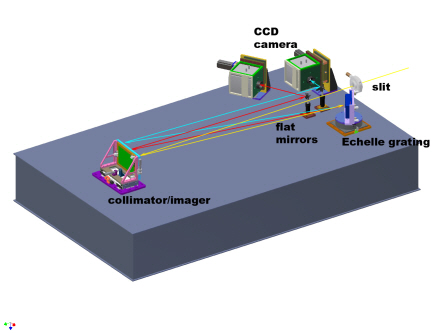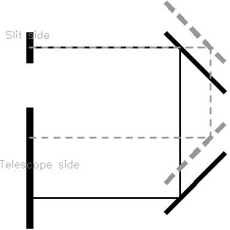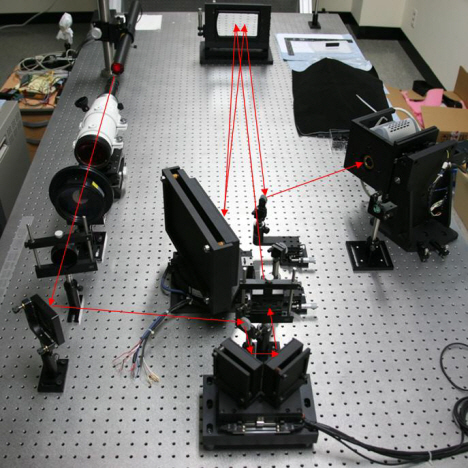
Development of Fast Imaging Solar Spectrograph (FISS) is a collaborative work between Seoul National University (SNU) and Korean Astronomy and Space Science Institute (KASI).
There exist various kinds of fine structures in the solar
chromospheres, like filaments/prominences, jets, spicules, etc. They not only
have fine structures, but they also manifest highly dynamic features. Due to
limited instrumental resolution up to now, even though these objects have been
observed for a long time, it has been difficult to obtain physical properties
(temperature, optical thickness, velocities, oscillation frequencies and so on)
of these structures with reliability. Identifying physical properties of these
fine structures is very essential to understand formation mechanism of the chromospheric features.
To be fully aware of physical parameters and dynamical features of fine structures, observing instruments should have both high spatial resolution and high spectral resolution, and even high temporal resolution. If New Solar Telescope (NST) of Big Bear Solar Observatory (BBSO) is equipped with FISS which has high spectral resolution, we expect to fulfill required resolution for identifying fine structures.

FISS is an imaging spectrograph which adopts Echelle disperser with field-scanning method. Single paraboloid mirror is used as both collimator and imager, which can be regarded as quasi-Littrow configuration. Dispersed beams are collected by two CCD cameras that will be preceded by order-selecting narrowband filters, so that images of dual spectral bands can be acquired simultaneously. According to the orientation of the grating, we can get various kinds of dual-band combination. With this dual-band feature, we can distinguish thermal and non-thermal contribution to the spectral line profiles. Some key specifications of FISS are described here below.
| Item | Specification |
| Lines of interest | Ca II (H, K, 8542), Hα, He I 10830Å and so on |
| Spectral resolving power (Δλ/λ) | 1.4 × 105 |
| Field of view | 40'' × 60'' |
| Best cadence | 10 seconds |
| Incident F ratio | 26 |
| Slit width | 16μm |
| CCD pixels / size | 512 × 512 / 16μm × 16μm |
Table 1. Specifications of FISS
FISS is adopting new type of field scanner which consists of two flat mirrors. This design does not require for the scanner to be located at pupil, and it is more compact than K mirror. Linear movement of the scanner makes shift of incident field on slit with preservation of path length.

Figure 2. Concept of two-mirrored field scanner. Thick lines indicate positions of mirrors. Solid black lines and grey dashed line indicate different positions of field scanner.
According to our simulation, the specifications of FISS were sufficient to identify thread structures in filaments/prominences (Ahn et al., JKAS 2008).
As of now, FISS is undergoing lab tests at KASI. Alignment
test on a horizontal optical table was successful. The FWHM at the focal plane
was 2.5 pixels and this can be regarded as moderate sampling. Still imaging test
using coelostat is ongoing. Finally, it should undergo the same procedure on a
vertical optical table, which is the same environment at the Coudé
lab of NST. Software control for slit scanner and data acquisition from CCD
cameras are completed and additional motion controls for mechanical components as
grating and CCD cameras are ongoing. We expect the completion of FISS in summer
of 2009. And as long as the beam from NST is fed down to Coudé
room, we may start the first observation.

Figure 3. Alignment test on a horizontal optical table and imaginary ray path (red arrows)